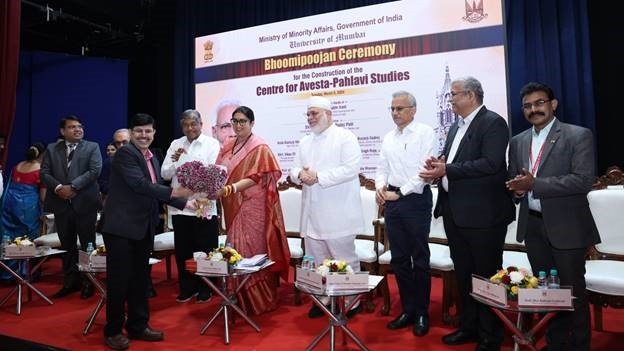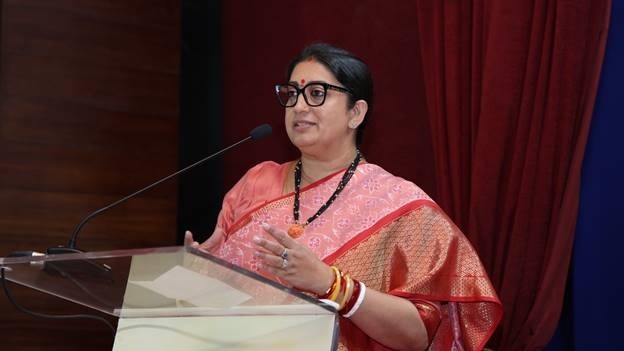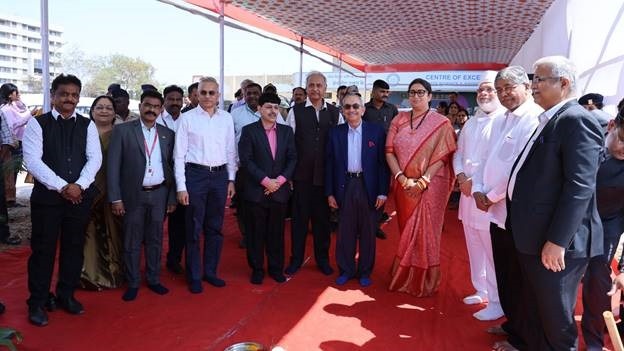Centre For Avesta-Pahlavi Studies At University Of Mumbai To Give Fillip To Zoroastrian Culture
The centre will offer undergraduate, graduate and doctorate programmes in Avesta, the language of the Zoroastrian scriptures.
Free Press Journal News Service
Dr Ravindra Kulkarni, vice-chancellor of the university, said the centre has already created interest outside India, with the University of Toronto evincing its interest in collaborating in the project.
Minister for Women and Child Development and Minority Affairs, Smriti Irani. |
The Minister for Women and Child Development and Minority Affairs, Smriti Irani, on Tuesday attended the bhoomipoojan of a new Centre for Avesta-Pahlavi Studies’ at the Kalina campus of the University of Mumbai.
The centre will offer undergraduate, graduate and doctorate programmes in Avesta, the language of the Zoroastrian scriptures. A memorandum of understanding to set up the facility had been signed between the University of Mumbai and the ministry for minority affairs last week.
The centre, which is expected to be ready in one year, will be financed by a grant of Rs 12 crore from the central government. Irani, who had announced the centre at a meeting with Parsi-Zoroastrians on February 29 in Delhi, asked state Minister for Higher Education Chandrakant Patil, who was present at the function, for support in developing the pilgrim and tourist infrastructure at Bahrot Caves near Dahanu, where Parsis had hidden the holy Iranshah fire – now housed in the community’s supreme fire temple at Udvada in Gujarat – to save it from an invading army.
“This important part of the community’s legacy needs attention. We will 100 per cent fund it,” she said, evoking loud applause from the audience.
Irani added that there are little-known events in the community’s history in India that have not yet received attention from researchers. “Around 1500 Parsis had taken up arms and had joined the Hindu kings to fight the invading army of Muhammad Bin Tughlaq, the sultan of Delhi,” she said. “This and other aspects in the Zoroastrian manuscripts, like astronomy and surgery, need to be institutionalised.”
The function was attended by religious scholars and members of the Parsi-Zoroastrian community, which has been asked for a centre for teaching and researching their liturgical language, especially since the only centre to teach it, at St Xavier’s College, closed down 21 years ago.
Khurshed Dastoor, the Vada Dastur or high priest at the Udvada shrine, reminded the audience that Avesta and Sanskrit were sister languages with a common origin. “It would have been difficult for Avesta to be translated if Sanskrit was not there,” said Dastoor.
Nadir Godrej, chairman of Godrej Agrovet, and a member of the Godrej business family, recited a poem that describes the 1,000-year-old history of his community in India after they fled religious persecution in Persia, now Iran. “They came to Gujarat, came into their own in British India, thrived in Mumbai,” said Godrej, adding that the community was facing a decline in population but had to preserve its culture beyond the demographic slide.
Godrej said that prominent members of the community, like freedom fighters Dadabhai Naoroji, Pherozeshah Mehta, industrialist Jamshedji Tata, founder of the Godrej business conglomerate Ardeshir Godrej, were all students of the University of Mumbai.
Patil said that it was odd that Mumbai, which has the largest population of Parsi-Zoroastrians in the world, did not have a college where Avesta-Pahlavi was taught. “India has lost 220 languages in the last 70 years as the last generation of speakers in the tongue have passed away,” said Patil, explaining why it was necessary to preserve languages before they go extinct.



